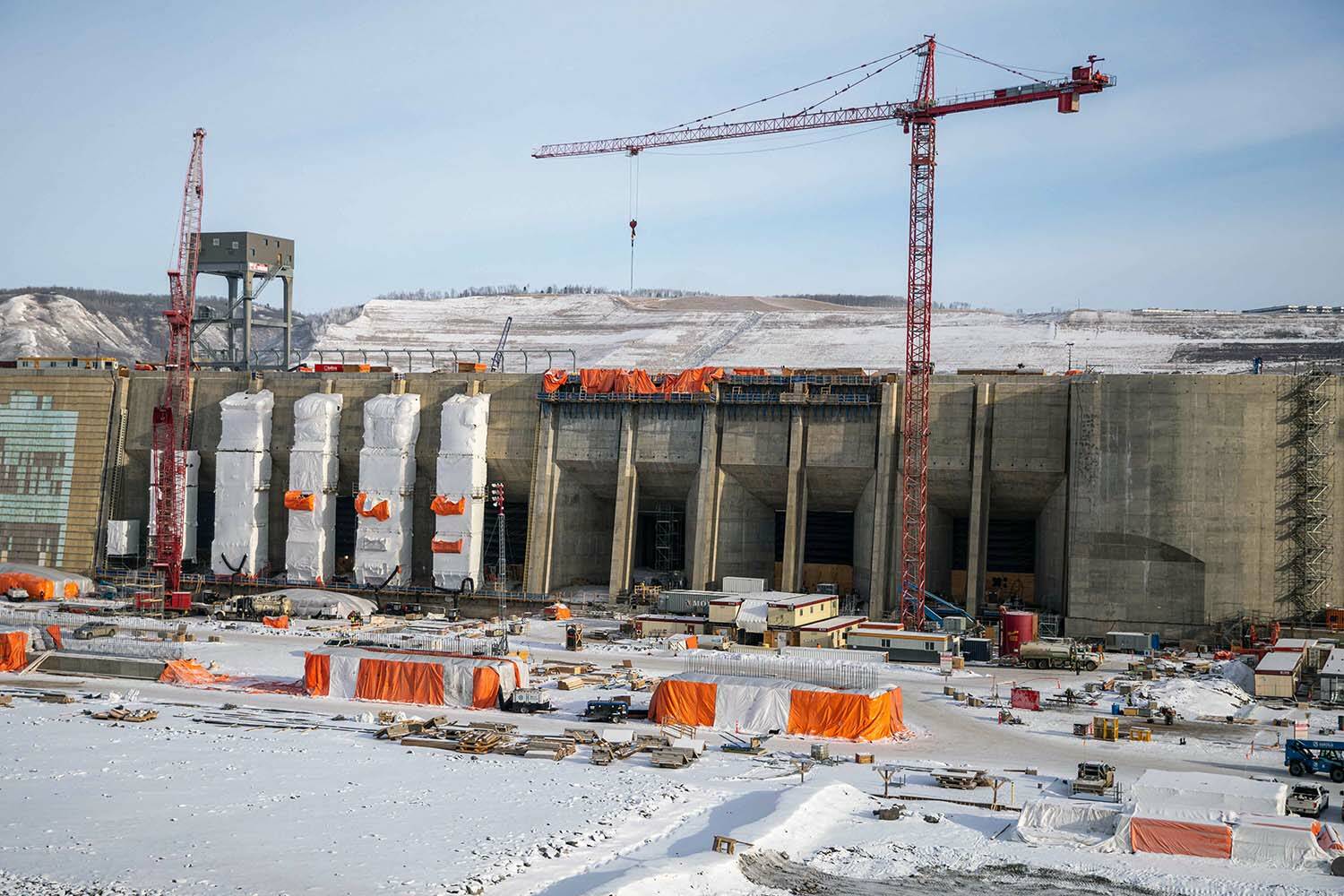Construction debris large enough to cover 28 soccer fields could remain on the bottom of the Peace River in northeastern B.C. if a provincial agency were to approve changes to BC Hydro’s Site C project.
The public comment period for the application from BC Hydro closes midnight April 22 after having opened on March 23.
BC Hydro says leaving the debris behind could actually be better for the environment once an 80-kilometre stretch of the river’s valley floods to create hydroelectricity.
“As the (project) schedule advances toward reservoir filling in 2023 or 2024, we have assessed several locations throughout the (project) where the removal of temporary structures within the future reservoir may result in greater potential harm to fish and/or fish habitat than retaining them in place for reservoir filling,” BC Hydro said in a letter to the Environmental Assessment Office.
Bob Gammer, Manager of Site C Community Relations, said in statement to Black Press Media that removing certain structures from river banks and river beds would increase the risk of sediment and fuel spills by having heavy equipment working in the river, potentially impacting fish habitats.
Up to 45 structures including giant concrete anchors, causeways, concrete abutments and a barge pad could remain behind.
“Any structures that will be retained in the reservoir will be assessed by a qualified environmental professional to confirm they won’t pose a risk to the environment,” Gammer said. “If all of the structures were approved to remain, the potential total area covered by the structures is about 20 hectares of in-stream area.”
The covered area would amount to about 0.21 per cent of the reservoir, BC Hydro said in its application. “Many of the temporary structures are made of gravel that has been sourced from the Peace River itself and riprap that has been sourced from Portage Mountain Quarry,” it reads. “No materials having potential for leachates (like treated wood piles) will be permitted to remain in the reservoir.”
Gammer said leaving these materials behind is common construction practice. “The Site C project’s earthfill dam, powerhouse and spillways are made up of similar materials like concrete, steel and aggregate and these components will also be under water for the next 100 years,” he said.
Site C critics have said the request changes the spirit of BC Hydro’s promise to remove its construction structures “as soon as they are no longer required.”
RELATED: Site C dam goes ahead, cost estimate now up to $10.7 billion
Minister of Environment George Heyman said it is “not abnormal to make an application for an amendment,” adding that it would be “reviewed carefully.”
He also addressed concerns that some of the members of the public appear caught-off guard.
Minister of Environment George Heyman said EAO advertised the opening of the public comment period on social media seven days before March 23 as well as the coming closure two days before April 22. EAO also advertised in local media, when asked about the sufficiency of the public comment process.
Heyman said government is committed to hearing from the public, adding government will continue to consult with affected First Nations.
Heyman said the request as well as the received feedback from the public will also undergo extensive, independent review.
Gammer said BC Hydro has been following the process as it exists, adding that it formally submitted the requested changes to the independent Environmental Assessment Office in February 2023 for approval after having shared a draft with affected First Nations last fall and presented them at two recent environmental forums.
Located southwest of Fort St. John in B.C.’s northeastern corner, Site C has been the source of economic and environmental controversy for decades.
While no project is without impact, Site C has been carefully planned, reviewed and subject to significant conditions, which authorities are regularly monitoring, Heyman said, adding that it will help British Columbia reduce its greenhouse gas emissions by producing hydro-electricity.
BC Green Leader Sonia Furstenau expressed support for residents, who had found about BC Hydro’s request through the media and called on the provincial government to make every effort to reduce the environmental harm from the project.
“So allowing BC Hydro to leave garbage and debris behind really goes against environmental protection, even in a case like this, where the harm from Site C is going to be enormous already,” she said.
When asked to respond to BC Hydro’s argument, Furstenau called for a transparent process.
“There needs to be real clarity about decisions like this that amend an environmental permit,” she said. It is not enough for BC Hydro to say that leaving behind the debris could actually reduce environmental damage, she said.
“There has to be real evidence to back up what’s being said.”
Site C is slated to become fully operational in 2025.
@wolfgangdepner
wolfgang.depner@blackpress.ca
Like us on Facebook and follow us on Twitter.

